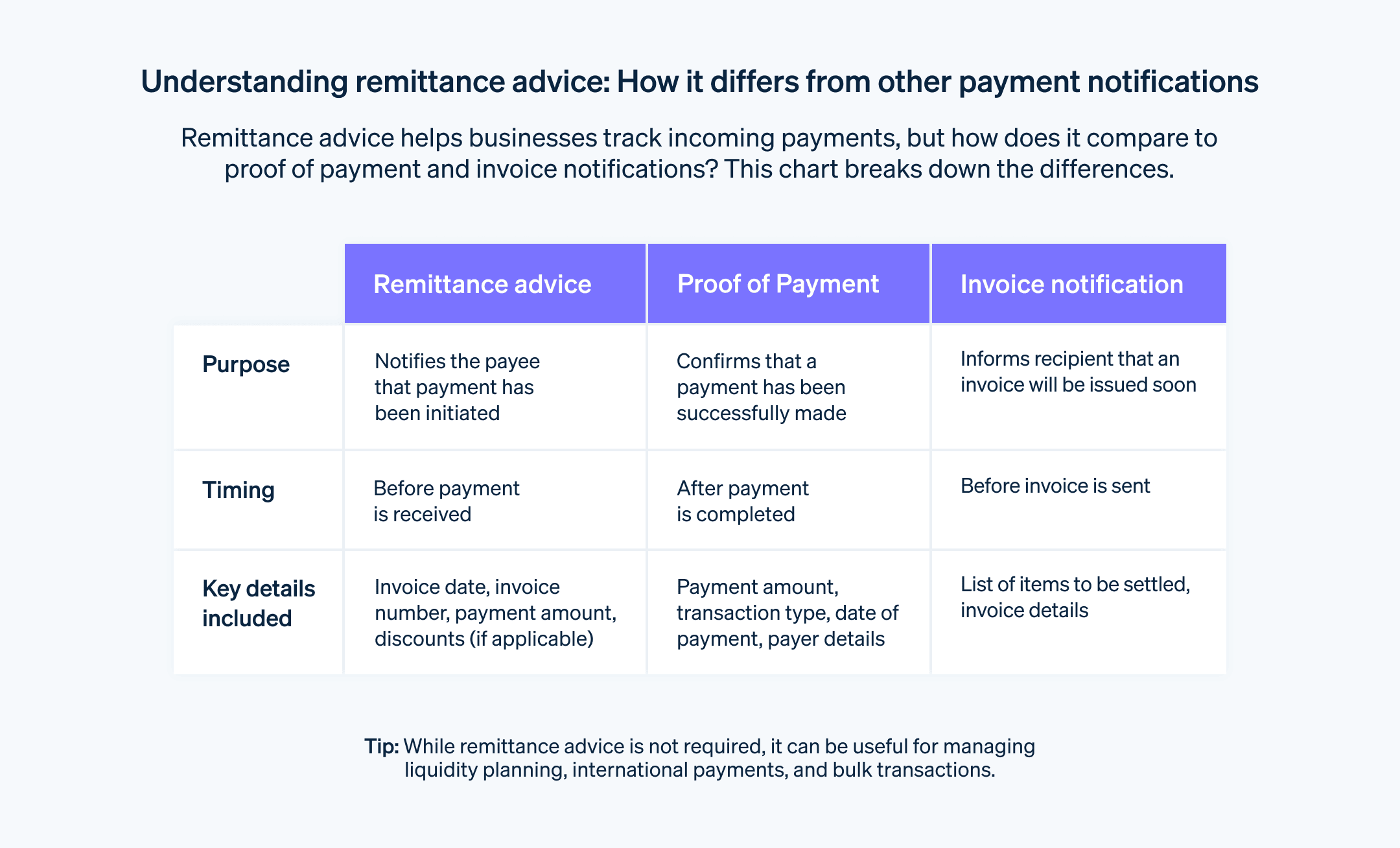It is always useful for businesses to have an overview of incoming payments. Similarly, they should also inform their customers when they have transferred urgently expected or particularly high-volume payments. Remittance advice can help with this. In this article, you will learn what remittance advice is, what information remittance advice should include, and whether there is an obligation to send remittance advice. We’ll also explain the differences between remittance advice, proof of payment, and an invoice notification.
What’s in this article?
- What is remittance advice?
- Are businesses required to send remittance advice?
- What information should remittance advice include?
- How does remittance advice differ from proof of payment and an invoice notification?
How AI is transforming payments: Strategies for unlocking revenue growth
Learn how AI can optimize the entire payments lifecycle—from checkout to dispute management—to help you increase revenue, reduce costs, and provide a better customer experience. Download the report.
What is remittance advice?
After issuing an invoice, businesses have to wait to receive payment. Remittance advice—a notification from the payer that payment for an invoice has been transmitted and will be received very soon—is a useful way to get an overview of outstanding invoices and expected incoming payments. Remittance advice can be issued by either party, depending on what has been agreed upon. It is often used when transferring large amounts, urgently expected payments, and/or international transfers, or when combining payments. It simplifies liquidity planning for the payee and helps allocate amounts to individual items for combined payments. In this sense, the word “advice” means “notice.”
However, given that most payments are now made digitally and are received immediately remittance advice is now rarely used by ecommerce businesses for invoicing. Originally, remittance advice would be sent with a check in the post and would contain information regarding the purpose of the check. This information could then be used by the person processing the check to help them allocate the check to the right invoice. Today, accounting programs do this automatically using artificial intelligence (AI) and the automated behaviors it creates.
Are businesses required to send remittance advice?
Businesses are not required to send remittance advice. Instead, it is seen as a courtesy. Similarly, as a business you do not need to do anything when you receive remittance advice.
This is different from the SEPA Direct Debit process, where it is mandatory for the payee to inform the payer promptly of an incoming debit.
What information should remittance advice include?
Payers should generally list all of the items covered by the payment. The following details are generally included: invoice date, invoice number, any discount where applicable, and the invoice amount.
How does remittance advice differ from proof of payment and an invoice notification?
Remittance advice gives notification that a payment is about to be made and supports the payment process. These days, remittance advice takes the form of automatically generated emails. They may include a reference to a payment order.
An invoice notification, on the other hand, is a notification that an invoice is about to be received. It normally includes a list of all items to be settled.
By contrast, proof of payment serves as notification that a payment has been made and helps businesses trace all incoming and outgoing payments. It shows what has been paid and where the money came from. Proof of payment includes details such as the amount, type of transaction, and the date of payment. It may take the form of a cash receipt or a completed transfer.

The content in this article is for general information and education purposes only and should not be construed as legal or tax advice. Stripe does not warrant or guarantee the accurateness, completeness, adequacy, or currency of the information in the article. You should seek the advice of a competent attorney or accountant licensed to practice in your jurisdiction for advice on your particular situation.